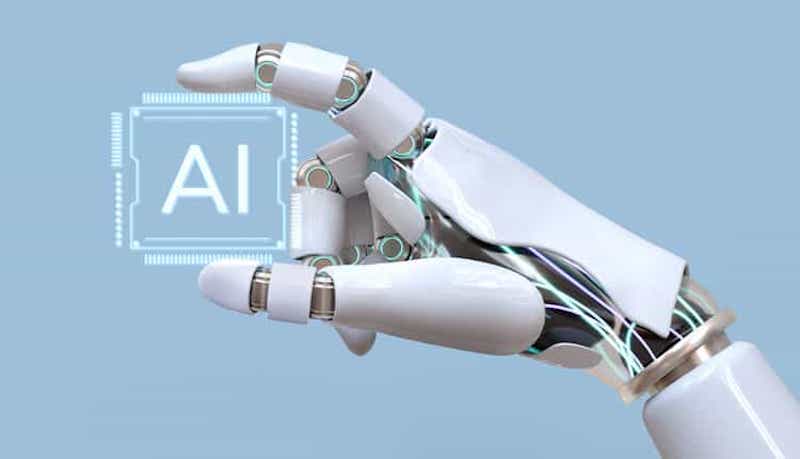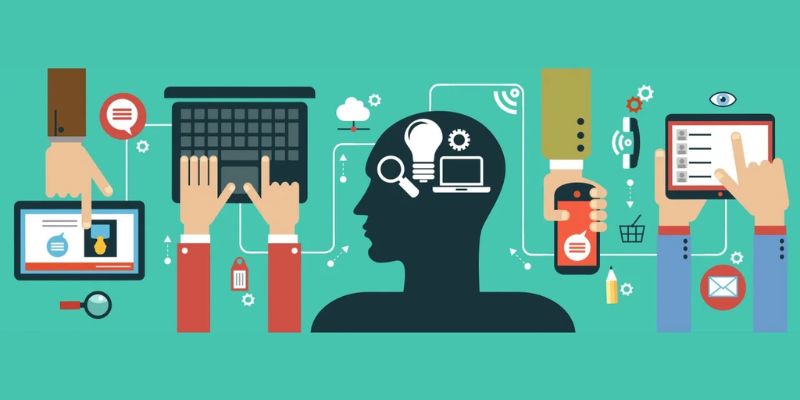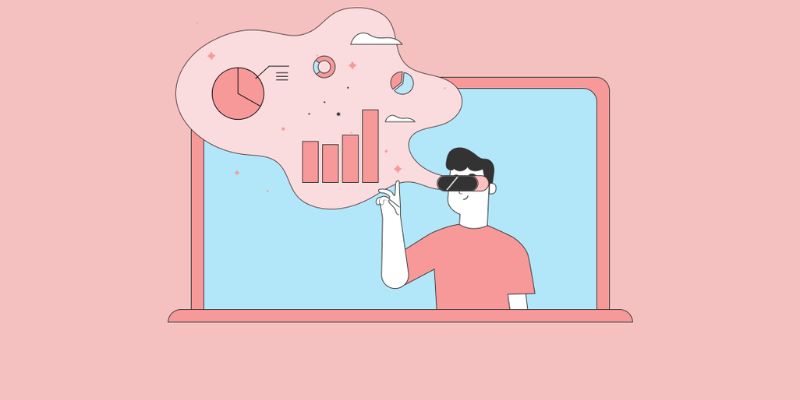In a world buzzing with artificial smarts, the need for understanding how AI makes decisions stands at the forefront of tech talks. Shining a light inside the AI “black box” is not just geek speak; it’s a trust thing. We demand clarity on how our data gets chewed up and spit out in decisions that could shape our credit, jobs, and even justice. So, let’s crack open the code cloak and make sure AI ethics aren’t just an afterthought. Join me on this byte-sized quest to make sense of machine minds.
The Imperative For Transparency in AI Decision-Making
Demystifying Black Box Algorithms
We face a big challenge in artificial intelligence (AI) today. How do AI systems decide? Sadly, many AI programs are like locked boxes—mystery boxes. We put data in, get answers out, but we can’t see how they work inside. This is a problem for trust and safety. We need to see how AI thinks to trust it.

Now, imagine if we could open up these boxes and look inside. That’s what experts mean by “making AI understandable.” We could see the steps AI takes in making decisions. This helps us find mistakes or reasons a decision might hurt someone. When we understand AI, we can make sure it’s fair for everyone.
What does this mean for you? It means better AI, ones that make decisions we can trust and understand. When AI is a mystery, it’s hard to say if it’s truly fair or smart. By breaking open these black boxes, we make AI our ally, not a puzzle.
The Role of Ethical Implications in Artificial Intelligence
Now, let’s talk about what’s right and wrong in AI. AI decisions can change lives. Think about that. A job, a loan, even jail time might depend on what an AI decides. So, we must be sure these choices are good and fair.
Ethics in AI means thinking about what AI should and shouldn’t do. We look at bias, where AI might treat people unfairly. We work to stop that. We make guidelines to keep AI from going wrong.
Say there’s a new AI that decides who gets a job. If it’s not fair, maybe it picks only people from one area or one school. That’s bias. We have to ask, “Is it treating everyone the same?” And if it’s not, we need to fix it.
By diving deep into AI decisions, we show that we care about doing things right. We want AI to help, not hurt. So we check and double-check AI work, like a teacher grades a test.
When we do this, we make trust in AI real. We can say, “Look, this AI is checked for fairness.” People feel safe and know AI is working with them in mind. That’s why explaining AI choices is so important. It makes sure AI serves all of us well, without leaving anyone out. This is the heart of AI ethics—making tech we can count on to be just and right. Like a good friend, we know AI will be fair and can explain why it made a choice. That brings us all peace of mind, knowing our future is in good hands with AI we can understand.
The Intersection of AI Accountability and Trustworthiness
Scrutinizing Algorithmic Decision Making for Bias
Let’s talk about AI. Sometimes AI choices can be unfair. Why does this happen? It’s often because of bias. Bias means the AI might favor one group over another. But not because it wants to. It’s because of the data it learned from. We want AI to be fair, just like a good referee in sports. So we look closely at how AI makes choices. We check if they’re fair to all. This is like having a set of rules that make sure everyone plays fair. This way, we try to spot any bias early on and fix it.

Now think about a time when someone played favorites. It wasn’t right, was it? Same goes for AI. We need to make sure AI doesn’t play favorites, especially by accident. When we look at AI decisions, it’s like we’re making sure all players in a game are treated the same. This helps build trust. If people trust AI, they are more likely to accept and use it. That’s our big goal – to have AI we can trust just like we trust a friend. And to do that, we need to make sure AI plays by the rules, being fair to everyone.
Advancing AI Fairness and AI Regulatory Compliance
So, how do we make AI fairer? First, we create rules (also known as regulations) that say AI must make choices in ways that are easy to understand and fair to all. For example, when a bank uses AI to decide who gets a loan, the AI must be clear about why one person got it and another didn’t. These rules also help everyone feel the same about AI – that it’s safe and fair.
Just like there are rules on how to drive a car safely, there are rules on how AI should work too. These rules look at things like, did the AI treat everyone the same? Did it explain its choices well? And did it respect everyone’s privacy? These are big questions we always ask to make sure AI follows the rules.
And if AI makes a mistake? It has to be able to say, “I made this mistake, and here’s why.” This is so we can understand what went wrong and how to fix it. It’s like a check-up for AI to help it get better.
Having fair AI is a lot like playing a game where everyone knows the rules and agrees to follow them. And when something doesn’t seem right, there’s a way to work it out. This keeps everyone happy and the game fun to play. We all want our AI games to be fun and fair, don’t we?
Making AI we can trust takes lots of work. But it’s worth it. Because in the end, fair AI is good for everyone. It’s like making sure that everyone, no matter who you are or where you’re from, gets a fair chance in the game of life. That’s a game we all want to win!
Bridging the Gap: Techniques for AI Explainability
The Journey from Machine Learning Explainability to Understanding AI Rationale
When we use AI, it makes choices that affect our lives. Yet, it’s often hard to tell how it decides. This is where machine learning explainability comes in. This means making AI’s thought process clear to us. It’s like explaining how a magic trick is done. Knowing this helps us trust and improve AI systems.
We need to know why an AI system says yes or no. This helps stop mistakes before they harm. For example, in health care, if an AI chooses a treatment, doctors must know why. That way, they can make sure it’s safe for patients.
Understanding AI rationale also means knowing it’s fair. AI must treat everyone equally. It shouldn’t make choices based on race, gender, or other unfair reasons. This is hard because AI learns from past data. And if that data has biases, AI might learn them too.
Clear AI reasoning helps us spot when it’s biased. This way, we can fix the AI to act fair. It’s like when kids learn good manners. If they start being rude, we guide them back. We must do the same with AI, steering it to fairness.
Employing AI Interpretability Techniques for Clearer Insights
AI interpretability means breaking down AI logic into simple parts. Then we can see each step AI takes in making choices. This is super useful but also quite hard. Sometimes AI’s thoughts are like a tangled ball of yarn. We try to untangle and lay out the yarn straight.
There are cool tools for this. Some make pictures that show what part of the data AI thinks is important. Others make new, simpler AI models to guess how the complex one works. This is like creating a model airplane to understand real planes. It’s simpler but still teaches us a lot about how the big one flies.
These techniques aim to make AI decisions as clear as possible. They give us a peek inside AI’s ‘black box’. The box is where all the secret AI thinking happens. Opening it lets us see the ‘why’ behind AI choices.
But why sweat to open this box? Because we want safe, fair, and trusty AI. If AI controls cars, it must explain how it avoids crashes. If it helps choose who gets a job, it must show it’s not biased. This keeps AI in check.
In short, AI must share its secrets with us. Only then can we use it confidently in our lives. It shows us that AI follows rules and respects us all. Making AI explain itself is tough but key. It builds a bridge between humans and machines, letting us walk together towards a future we can all trust.
Building Blocks for Ethical AI Governance
Pioneering Responsible AI Frameworks
In the world of AI, making choices we can trust is key. Picture this: You ask AI for help with a hard choice. How does it decide? It’s like asking a smart friend for advice. You’d hope they’d tell you how they came up with their advice, right? That’s the push for AI that can explain itself. We all want AI to explain its choices as our friend would.
Making AI we can all understand isn’t just nice; it’s a must. We don’t want a future where AI’s choices are a mystery, where we just shrug and say, “It’s AI. Who knows?” No, we want AI to be like an open book. We’re talking about building AI that’s clear as day about why it does what it does.
Here’s the meat of it: to trust AI, we need to get its logic. We aim for AI to show us, in simple terms, its thought path. That’s when AI’s real power shines through. It acts fair when it’s not hiding anything. That’s AI that pulls its weight and earns our faith. And it’s not just for tech wizards. Every person who uses AI should get the why behind it.
Now, this is where AI needs a strong set of rules. Like a game with clear do’s and don’ts. These rules tell AI how to make decisions. This means looking hard at our values as people, the moral compass that guides us. We make AI rules that say, “Here’s how to act nice. Here’s what’s fair.”
No one likes bias. It’s the unwanted guest at the party. We’ve seen bias sneak into AI’s choices, causing a real stir. So part of making AI we can count on is scrubbing out these biases. It’s like when you edit a photo to make it just right. We’re refining AI’s choice-making process. This keeps it free of unfair slants, so it treats everyone the same.
Integrating Human Oversight into AI Decision-Making Processes

Now, let’s chat about people power in AI. We bring people into the AI choice-making loop. Think of it as a team-up. You’ve got the fast, always-on AI, and then you have the human touch. Human oversight means we’ve got real folks checking in on AI. They’re like quality control, making sure AI stays on track and plays by the rules.
When humans watch over AI, it’s like having a teacher in class. They make sure AI doesn’t start daydreaming and goof up. Instead, it sticks to the lesson plan. With people guiding them, AIs learn to play nice and fair. This is how we make AI trustworthy and something you can count on.
So what’s all this talk about AI deciding things mean for you? Simple. Better AI choices mean better help for you. We’re working on the tools to make every AI’s choices something you can trust. That way, you know when you ask AI something, you’re getting the best, most fair answer. It’s like building a bridge from complex tech to the everyday user. With this bridge, everyone gets to join in the world of AI, no confusion or secrets. That’s the goal. And every step we take towards making AI clear and ethical, we bring that future closer to now.
In this post, I’ve shown why clear AI choices matter. We opened up the black box of algorithms to shed light on AI’s ethical side. We saw the need for AI to be fair and fit within rules that keep it in check.
We dove into making AI’s thought process clearer. Understanding how AI thinks lets us trust its choices more. We also looked at ways to make AI’s insights clearer for everyone.
Lastly, we talked about setting up solid rules for moral AI use. Leaders are making frameworks for this now. We must mix in human checks to keep AI’s choices sound. By doing this, we build trust and make sure AI decisions help us all.
Remember, when AI’s work is clear to us, it does better for us. Let’s aim for an AI future that’s open, fair, and easy to understand.
Q&A :
Why is it important to understand AI decision-making processes?
Understanding AI decision-making is crucial because it ensures transparency and trust in AI systems, particularly as they become more integrated into critical areas like healthcare, finance, and law enforcement. By comprehending how AI arrives at conclusions, we can better assess its fairness, reduce biases, manage risks, and ensure that AI-driven decisions align with ethical and legal standards.
How can we make AI decision-making more transparent?
Transparency in AI decision-making can be improved by implementing explainable AI (XAI) systems, which provide insights into the models’ reasoning. Other techniques include using interpretable machine learning models, conducting independent audits, and providing clear documentation regarding the AI system’s functionality and data it was trained on. Regulating bodies may also set standards to which AI developers must adhere.
What are the challenges faced in understanding AI decisions?
One of the primary challenges in understanding AI decisions is the complexity of AI models, particularly deep neural networks that are often referred to as “black boxes” due to their opaqueness. Additionally, the proprietary nature of many AI algorithms can prevent full disclosure. There are also technical barriers in translating complex algorithmic processes into understandable terms for non-experts.
How does AI transparency impact the legal and ethical implications of AI?
AI transparency has significant legal and ethical implications as it affects accountability. Without a clear understanding of AI decision-making, assigning responsibility for errors or biases in AI judgments can be challenging. This has implications for privacy, security, and fairness, and raises issues about compliance with regulations such as GDPR. Ethically, transparency is key in maintaining public trust in AI systems.
What steps are being taken to enhance our understanding of AI’s decision-making?
Advancements in explainable AI (XAI) research are among the key steps in enhancing our understanding of AI’s decision-making. Governments and industries are also emphasizing the creation of ethical guidelines and standards for AI transparency. Collaboration between AI researchers, ethicists, and legal experts helps address the multifaceted aspects of AI decisions. Additionally, investment in AI literacy and public education ensures a broader understanding of AI’s role in society.



